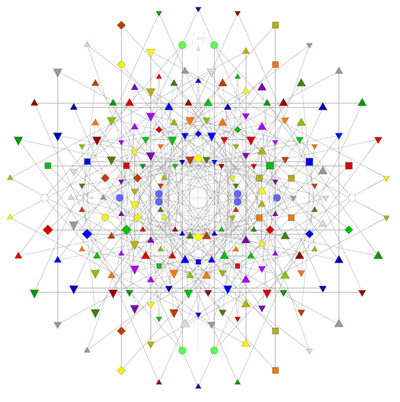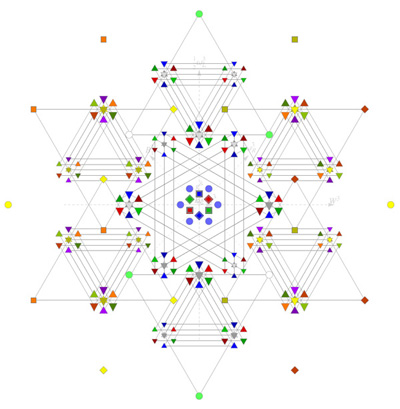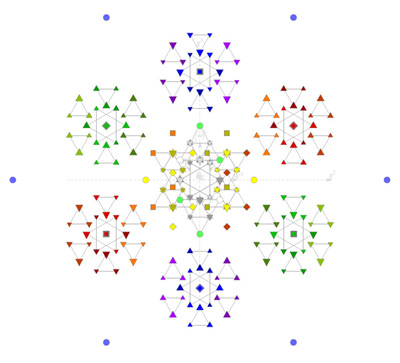My writer pal John Shirley sent me a link to an article about mathematical physicist, A. Garrett Lisi, who’s written an exciting paper called, “An Exceptionally Simple Theory of Everything”. Some physicists are attacking the paper—and I’m not enough of physicist to judge who’s right. But as a mathematician, I like the idea of finding a simple mathy pattern underlying the messy heap that the physicists have made of their theories.

According to Lisi, all the known particles and forces can be regarded as nodes within a complex mathematical object called E8, a symmetric higher-dimensional polyhedron consisting of 248 vertices in eight-dimensional space, first discovered in 1887. I’ll show three different views of E8 taken from Lisi’s paper.

Since E8 is an eight-dimensional object, you can rotate in various ways to pop out new symmetries.

Lovely, huh?

Although E8 has been around for 130 years, it was just in March, 2007, that these funky mathematicians depicted above figured out the full details of it. They were funded by none other than Silicon Valley’s leading retail purveyor of computer hardware and software, Fry’s Electronics, who’ve founded AIM, the American Institute for Mathematics, which has a very nice E8 page.

Something cool about Garrett Lisi is that he spends a lot of time in Hawaii surfing.
This image is by Jeremy Bennett of New Zealand, and will appear on the cover of the January issue of Asimov’s SF for “The Perfect Wave” by Marc Laidlaw and me. The surf looks weird because it’s running a non-linear wave equation, just like CAPOW.









November 17th, 2007 at 1:27 pm
wow on the polyhedron! Not like I understand what it means, but wow if all particles could be explained so simply.
You like need to make some sort of sampler of music that feeds into Capow as seed values, kind of like the video version done for the class. Then you would just come and sit watch and listen, or maybe you could even sell it.
May 19th, 2012 at 3:45 pm
Lines… Lines everywhere.